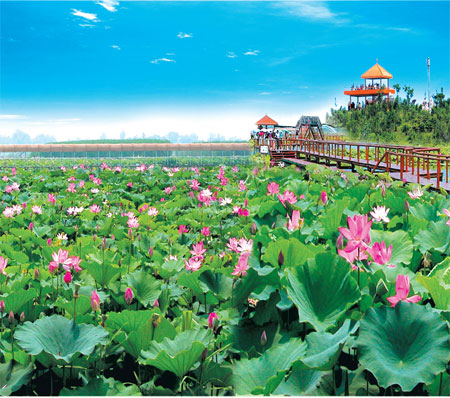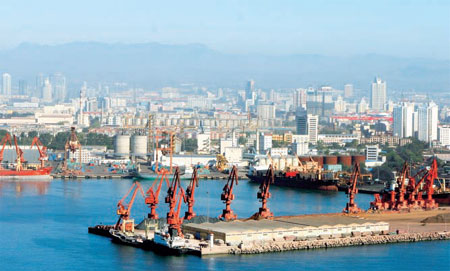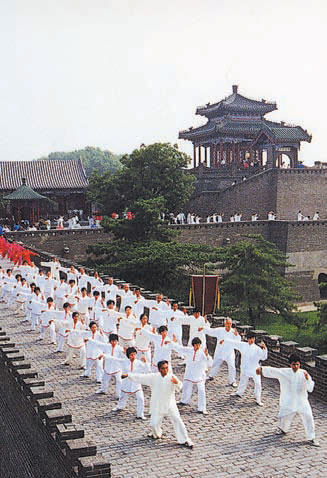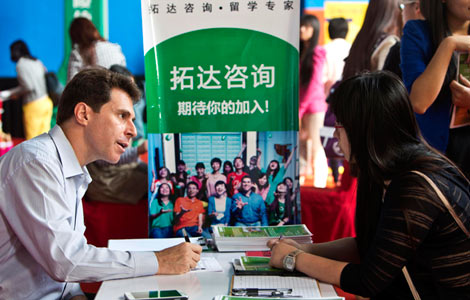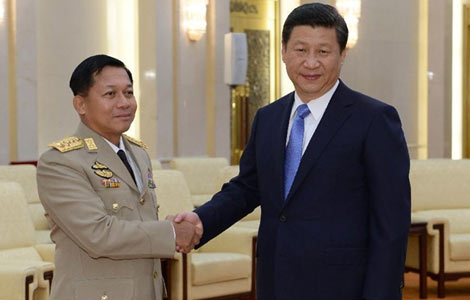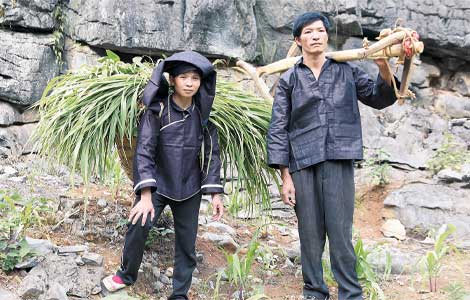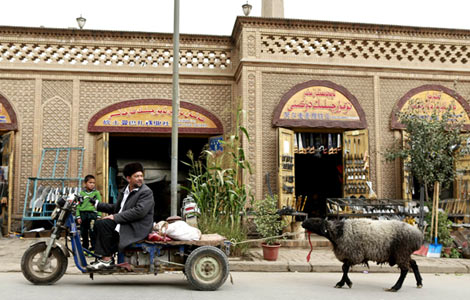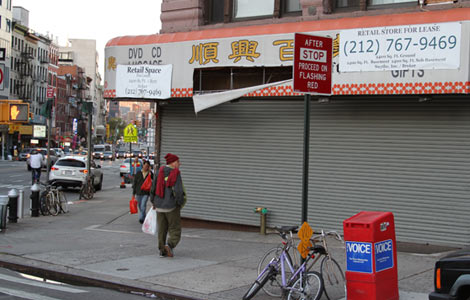Location is key to growth for province, says govt
Updated: 2013-10-17 10:59
By Zhang Yu in Hebei (China Daily USA)
|
||||||||
|
In addition to being a top region in terms of economic output, Hebei also has beautiful tourist spots, like Baiyangdian in Baoding city, pictured here. Photos Provided to China Daily |
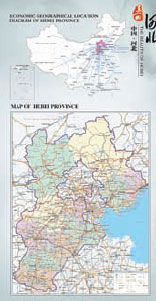
Greater integration with the nation's capital and other urban centers will drive Hebei province's development in the near future, according to a statement from the local government
When a series of high-speed rail projects are completed in 2015, 11 cities in the province will be an hour's train ride to Beijing. A neighbor of the capital and Tianjin, Hebei serves and shares resources with the two big cities.
The province is part of the Capital Economic Circle, which provides a pool of enterprises as well as labor and natural resources for its member cities to share. A blueprint for the circle was laid out in the country's 12th Five-Year Plan (2011-2015).
China's second capital international airport will be built near Langfang city, Hebei province. The new capital airport will help boost the province's tourism and economy.
Even now, Hebei already tops most provinces in economic development.
In 2012, the provincial total output value reached 2.66 trillion yuan ($434.5 billion), an increase of 9.6 percent compared to 2011, ranking the sixth in China.
Today, Hebei is striving to grow into a major economic power by implementing a series of plans, including the development of coastal areas.
Hebei has a coastline of 487 km and forms the core of the Bohai Rim, one of the most economically vigorous areas of Northeast Asia, according to the statement.
Tangshan Port (including the harbor districts of Caofeidian and Jingtang), Qinhuangdao Port and Huanghua Port are the three largest ports in Hebei. Each of them has an average annual cargo handling capacity of more than 100 million tons.
Functioning as important gateways that connect North and Northwest China to the world, these ports have established trade relations with more than 400 ports from various countries.
According to a report by the Hebei government, the province's cargo volume totaled 750 million tons last year, ranking fifth in China. By 2015, the number will reach 800 million tons, the government predicts.
As a major agricultural province in China, Hebei is developing a modern approach. Local officials are hoping to solidify the province's lead in the fields like livestock, vegetable and fruit through management reforms.
The production volume of eggs ranked first nationwide and that of meat ranked fifth. The total output of vegetables and fruit both ranked second. The output of pears, red jujubes, chestnuts and apricots ranked first, while the output of peaches, grapes and persimmon ranked second in China.
Hebei is also the cradle of modern industry in China. It was home to the country's first railway, first bag of cement and first piece of glass.
Today, one of its top industries is iron and steel. Hebei contributes one-fifth of the national total iron and steel capacity. Its output has ranked first in China for 12 consecutive years. Hebei Iron and Steel Group, a Fortune 500 enterprise, has also been listed as one of the 100-billion yuan enterprises.
The equipment manufacturing industry in Hebei has also made outstanding achievements.
China's first CRH3 rail, a high-speed rail with a standard speed of 350km/h, was born in Hebei. CNR Tangshan Railway Vehicle, a company located in Tangshan, a port city in Hebei, manufactured it.
The company currently produces more than half of the nation's trains that run at a speed of more than 300km/h.
Hebei also has many other brands that have a distinguished reputation at home and abroad, such as Baoding Tianwei Transformers, Shanhaiguan Ship, Great Wall Motors and Tangshan Railway Vehicle.
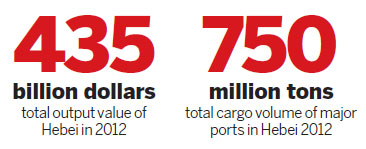
The Hebei government is also working on new industries and technologies, such as energy conservation and environmental protection, high-end equipment manufacturing, alternative energy, new material, and new-energy motor vehicles.
In 2012, the added value of new and high-tech industries in Hebei reached about 130 billion yuan ($21 billion).
Yingli Group, located in China's Power Valley Baoding, which is also in Hebei province, has established a photovoltaic cell production system with a comprehensive industrial chain. It is the first in China and the second in the world.
Jinglong Group in Xingtai is the largest base for solar monocrystalline silicon production in the world.
Hebei is one of the top 10 regions for foreign trade in China. It has established economic and trade ties with more than 200 countries and regions from around the world. The province also plays a crucial role in attracting foreign businesses and investment for the whole country.
In recent years, in order to attract more investment, Hebei has been striving to improve its ecological environment as well as to increase efficiency in administration and its service industry.
Its efforts have paid off. The province has already become a new hub for international capital transfer in China, with more and more international companies, top 500 enterprises, and State-owned enterprises setting their headquarters there.
In 2012, actually utilized foreign investment of Hebei reached $6.03 billion. Its import and export value totaled $50.55 billion last year.
The province has partnered with the European Union, Australia, Brazil, the United States and South Korea in trade.
It is also the home for more than 80 transnational corporations, such as Wal-Mart from the United States, Germany's Siemens, Japan's Panasonic and South Korea's Samsung.
The province continues to adjust the structure of its export products. Big domestic names like Yingli photovoltaic products, North China Pharmacy and Huida Ceramics, are all made in Hebei.
zhangyu@chinadaily.com.cn
|
One of the three largest ports in Hebei, Qinhuangdao Port plays a crucial role in connecting the province to the rest of the world. |
|
Wuling Congtai Park in the tourist city Handan is a place of significant historical value, historians say. |
|
Beidaihe Resort in Qinhuangdao, is an ideal place for vacations, local tourist officials say. |
(China Daily USA 10/17/2013 page16)
Most Viewed
Editor's Picks

|

|

|

|

|

|
Today's Top News
US debt impasse ending, Obama to sign bill
Facebook goes fishing in China
Michigan auto czar leading trade trip to China
Yuan gains the most in 20 years
Tibet avalanche claims 4
First interprovince subway route opens
US expert finds job 'rewarding'
Trending news across China
US Weekly

|

|
